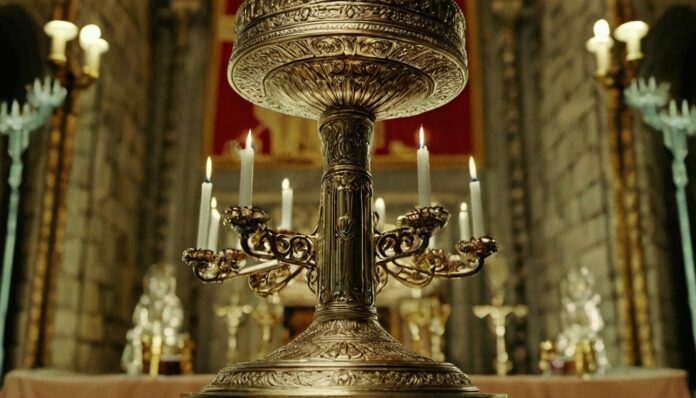The Holy Grail is one of the most enduring legends in Western mythology and Christianity. It has captured the imaginations of people for centuries, spawning countless tales of quests, chivalry, and mystery. But what exactly is the Holy Grail, and why does it hold such fascination?
The Holy Grail is believed to be the cup that Jesus Christ used at the Last Supper, and later used by Joseph of Arimathea to collect Christ’s blood at the crucifixion. According to legend, Joseph brought the Grail to Britain, where it became an object of veneration. Early accounts, such as those by Chrétien de Troyes in the 12th century, describe the Grail as a mystical and sacred object.
Mythical Aspects of the Holy Grail
The Holy Grail, steeped in legend and mystery, has also become a subject of various myths and misconceptions over the centuries. Here are some intriguing myths associated with the Holy Grail:
1. Magical Properties
The Grail is often depicted as possessing magical powers, such as healing the sick, providing eternal youth, or granting unlimited abundance. These attributes contribute to its allure as an object of desire.
2. Connection to Bloodlines
A persistent myth suggests that the Grail is associated with the bloodline of Jesus Christ and Mary Magdalene, popularized by books like “The Da Vinci Code.” This theory proposes that descendants of Christ safeguarded the Grail.
3. Guardianship by Secret Societies
According to some myths, secret societies such as the Knights Templar or the Freemasons have guarded the Grail throughout history, keeping its location and powers hidden from the public eye.
4. Quests and Challenges
Medieval romances often depict knights undertaking perilous quests to find the Grail. These stories involve moral tests, spiritual challenges, and encounters with supernatural beings, adding to the Grail’s mystical reputation.
5. Association with Arthurian Legends
In Arthurian legend, the Holy Grail appears as a central motif in quests undertaken by King Arthur and his knights. The Grail Quest symbolizes the pursuit of spiritual perfection and divine revelation.
6. Symbol of Divine Revelation
The Grail is frequently portrayed as a symbol of divine revelation and spiritual enlightenment. It represents the quest for knowledge, wisdom, and the deeper mysteries of faith and existence.
7. Lost and Hidden Treasures
Many myths suggest that the Grail is hidden in remote locations, buried beneath ancient ruins, or submerged in mystical waters. These tales contribute to the ongoing fascination with its elusive whereabouts.
8. Variety of Physical Forms
The Grail is imagined in various physical forms, including a cup made of precious metals and adorned with jewels, a stone vessel, or even as a dish or platter. This diversity reflects the multiplicity of interpretations surrounding its nature.
9. Association with Celtic Mythology
Some myths link the Holy Grail to ancient Celtic traditions and myths, blending Christian symbolism with pagan motifs related to fertility, rebirth, and the sacred cauldron of abundance.
10. Quest for Immortality
The Grail is sometimes depicted as a means to achieve immortality or eternal life. It embodies the human desire for transcendence and the search for eternal truths beyond mortal existence.
These myths and interpretations surrounding the Holy Grail continue to captivate the imagination and inspire ongoing quests for its true meaning and significance in both historical and mythological contexts.
Theories and Speculations
Numerous theories abound regarding the fate and location of the Holy Grail. Some believe it was hidden away in Britain, protected by secret societies like the Templars. Others suggest it could be buried in remote locations or lost at sea. Despite efforts by historians and archaeologists, the physical existence of the Grail remains unproven.
*****
The legend of the Holy Grail continues to influence literature, art, and popular culture. It has inspired writers, filmmakers, and artists to explore themes of heroism, sacrifice, and the quest for spiritual fulfillment. From medieval romances to contemporary novels and movies, the Grail remains a symbol of human aspiration and the eternal search for meaning.
